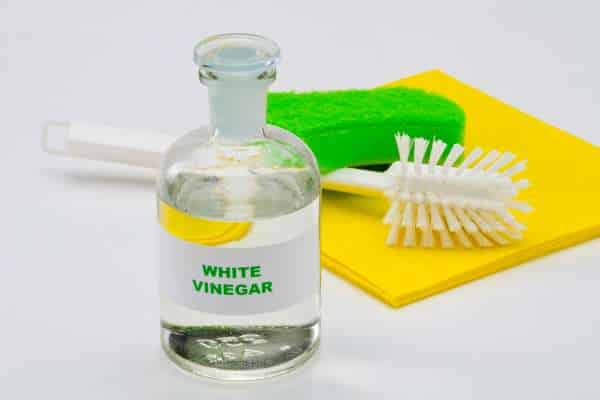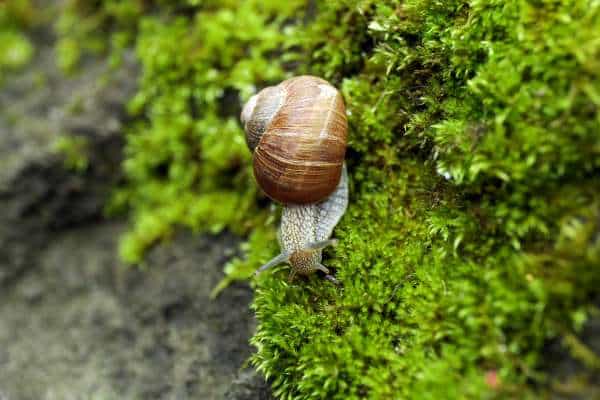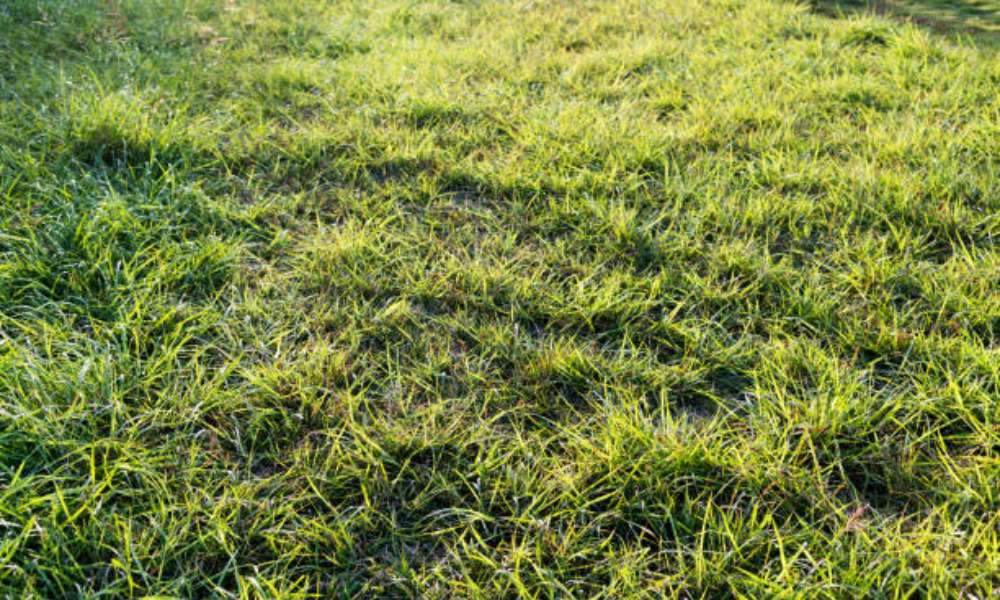When it comes to maintaining a lush and vibrant garden, the presence of moss can be a troublesome issue. While some gardeners appreciate moss for its rustic charm, others find it a nuisance that competes with their plants for vital nutrients and moisture. If you’re in the latter group, you might be wondering how to tackle this green interloper without harming your cherished plants. The question at hand, “How Do You Kill Moss Without Killing Plants,” involves a delicate balance of effective moss control techniques that preserve the health and beauty of your garden. In this guide, we will explore various methods to eradicate moss safely and efficiently, ensuring that your garden remains a thriving ecosystem for your plants to flourish.
1. Remove Moss Manually, Avoid Chemicals.

Eliminating greenery physically is a direct and harmless to the ecosystem strategy to battle its development without depending on hurtful synthetics. By basically genuinely lifting or scratching away grassy from surfaces utilizing instruments like a firm brush or rake, nursery workers can successfully wipe out its presence. This strategy not only stays away from the potential harm brought about by compound medicines yet, in addition, considers designated expulsion, limiting aggravation to encompassing plants. Moreover, manual evacuation gives an open door to groundskeepers to evaluate and address basic elements adding to greenery development, like unfortunate seepage or extreme shade. This proactive methodology advances a better and more adjusted environment in the nursery, at last guaranteeing the prosperity of all vegetation.
2. Sprinkle Baking Soda On Moss.

Sprinkling baking soft drinks on greenery presents a protected and regular option in contrast to substance-based medicines for grassy destruction. Baking pop, or sodium bicarbonate, disturbs the acidic climate liked by greenery, really restraining its development. By delicately applying baking soft drinks straightforwardly onto greenery-covered surfaces, landscapers can step by step debilitate and kill off the grassy without representing any mischief to encompassing plants. This strategy is especially worthwhile for fragile or touchy plant species, as it keeps away from the potential dangers related to cruel compound arrangements. Besides, baking soft drinks is promptly accessible, reasonable, and harmless to the ecosystem, making it an optimal decision for eco-cognizant nursery workers looking for successful greenery control techniques.
3. Apply Vinegar-water Solution On The Moss.

Applying a vinegar-water arrangement onto greenery is a characteristic and non-poisonous strategy to take out greenery development without hurting encompassing plants. Vinegar, with its acidic properties, goes about as a strong greenery executioner, upsetting its cell structure and hindering further development. When weakened with water, vinegar turns into a safe and harmless ecosystem arrangement that can be splashed or poured straightforwardly onto greenery-invaded regions. This strategy kills existing grassy as well as assists with forestalling its regrowth by modifying the pH equilibrium of the dirt. Furthermore, vinegar is promptly accessible in many families, making it a helpful and financially savvy answer for landscapers looking for a protected and maintainable option in contrast to substance medicines.
4. Increase Sunlight To Deter Moss Growth.

Expanding daylight openness is a characteristic and powerful method for hindering greenery development without falling back on compound mediations. Greenery flourishes in soggy, concealed conditions, making regions with restricted daylight especially helpless to pervasion. By decisively pruning overhanging branches or dispersing foliage, nursery workers can permit more daylight to enter the impacted regions, making conditions less good for grassy development. Moreover, managing back-encompassing vegetation can further develop air dissemination and advance quicker drying of dampness, How To Get Rid Of Moss In Lawn Naturally. This approach assists with smothering grassy development as well as advantages the general well-being and life of encompassing plants by giving them the ideal daylight openness they need to flourish.
5. Use Iron Sulfate To Kill Moss.
Utilizing iron sulfate is a designated and powerful technique to kill grass without hurting encompassing plants. Iron sulfate, otherwise called ferrous sulfate, is a mineral-based compound that successfully kills grassy upon contact. When applied to greenery-pervaded regions, iron sulfate upsets the cell construction of the greenery, making it shrivel and pass on. Not at all like compound herbicides, iron sulfate presents an insignificant gamble to local plants and the climate, making it a more secure option for nursery workers looking for eco-accommodating arrangements. Moreover, iron sulfate gives fundamental supplements to the dirt, advancing by and large plant well-being and essentialness. Notwithstanding, it’s essential to utilize iron sulfate sparingly and as indicated by bundle guidelines to stay away from over-application, which might hurt plants.
6. Employ Natural Moss Control Methods.
Utilizing normal greenery control techniques offers a practical and harmless to the ecosystem way to deal with overseeing grassy development without endangering the soundness of encompassing plants. Normal cures like manual evacuation, expanding daylight openness, upgrading soil waste, and advancing air circulation can successfully smother greenery multiplication while cultivating a better nursery environment. These techniques work as one with nature, addressing fundamental variables and adding to grassy development without depending on cruel synthetics or manufactured medicines. By embracing an all-encompassing methodology that focuses on the equilibrium and prosperity of the whole nursery environment, groundskeepers can accomplish enduring greenery control while supporting the thriving development of their plants.
7. Enhance Drainage To Prevent Moss.
Improving seepage is a proactive way to deal with forestalling grassy development without depending on compound medications. Greenery flourishes in clammy, ineffectively depleted conditions, making regions with stale water especially vulnerable to pervasion. By further developing soil seepage through techniques like introducing waste frameworks, correcting soil with natural matter, or making raised beds, grounds-keepers can decrease abundance dampness levels and put greenery development down. This not only assists with forestalling the foundation of grassy yet in addition advances better root improvement and generally plant power. By tending to the basic reason for dampness maintenance in the dirt, nursery workers can make conditions that are less ideal for greenery while encouraging a better and stronger nursery biological system.
8. Introduce Moss-eating Creatures.

Bringing greenery-eating animals into the nursery environment can offer a characteristic and economical technique for controlling grassy development without hurting plants. Certain life forms like snails, slugs, and a few types of bugs normally feed on greenery as a feature of their eating routine. Moreover, a few birds, similar to robins and thrushes, are referred to consume grassy too. By empowering the presence of these greenery-eating animals through living space improvement and giving appropriate food sources, landscapers can serve to oversee grassy populaces normally. This approach lessens dependence on synthetic medicines as well as adds to the, generally speaking, biological equilibrium of the nursery, advancing biodiversity and supporting a better environment for the two plants and untamed life.
9. Maintain Proper Ph Levels In Soil.
Keeping up with legitimate pH levels in the dirt is fundamental for forestalling grassy development without hurting plants. Greenery flourishes in acidic conditions, so guaranteeing the dirt pH is inside the ideal reach for plant development can assist with smothering grassy multiplication. Testing the dirt’s pH and making essential changes utilizing natural corrections like lime or fertilizer can make conditions less ideal for greenery while advancing sound plant development. By keeping a reasonable pH level, nursery workers can establish a climate that upholds the essentialness of their plants while at the same time putting grassy development down, giving a characteristic and maintainable answer for greenery control.
10. Opt For Eco-friendly Moss Killers.
Settling on eco-accommodating grassy executioners gives a protected and practical answer for controlling greenery development without hurting plants or the climate. Numerous economically accessible grassy executioners contain brutal synthetic compounds that can adversely affect the encompassing biological system. All things considered, picking normal and biodegradable options like vinegar, baking pop, or iron sulfate permits groundskeepers to oversee greenery while limiting environmental effects. These eco-accommodating choices are delicate on plants, soil, and valuable creatures, going with them ideal decision for those looking to keep a sound and adjusted garden climate. By focusing on the utilization of earth-capable grassy control techniques, groundskeepers can accomplish viable outcomes while advancing maintainability and saving the normal magnificence of their open-air spaces.
Conclusion
Successfully tending to grassy development without compromising the well-being of encompassing plants is feasible through an assortment of eco-accommodating strategies. By executing procedures, for example, manual expulsion, regular cures like vinegar and baking pop, streamlining natural circumstances, and advancing organic equilibrium, landscapers can effectively battle greenery while saving the essentialness of their plant life. With a pledge to economical practices and careful stewardship of the nursery environment, it’s feasible to partake in a grassy-free scene overflowing with thriving plants long into the future.






